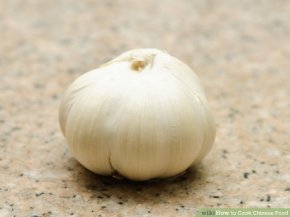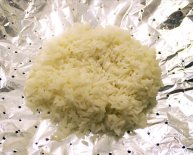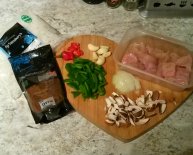August 1, 2018

How to Cook Asian Food?
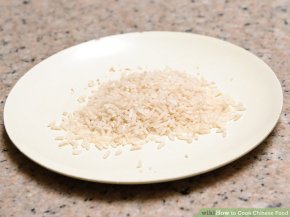
- As for noodles, you should primarily stock up on rice noodles, glass noodles, and tofu noodles. Rice noodles have a soft texture and are made from rice flour. Glass noodles, also called bean threads or bean vermicelli, are made from mung bean starch. Tofu noodles, also called soybean curd noodles, are made from pressed tofu and have an al dente texture.
- Use the right cooking oil. Many cooking techniques used when preparing Chinese food require some form of cooking oil. You need to make sure that the oil you choose can withstand the heat you plan on using with it. Also keep in mind that some oils have stronger tastes than others.
- You should keep a bottle of sesame oil, but note that this oil is usually used for its flavor and not used as a cooking oil. More specifically, you can expect to drizzle it into a dish at the last minute to maximize the effect of its flavor and aroma. Use a fragrant version that is 100 percent pure rather than one mixed with vegetable oil.
- Polyunsaturated oils are usually used for cooking purposes. Go with peanut oil if you want something with a little extra flavor. For a cleaner taste, try corn, safflower, or soya oil. Vegetable oil can also be used in a pinch, but stay away from butter, margarine, and olive oil.
- Soy sauce is used in marinades and sauces, and some even use it as a condiment. It has a salty, savory taste, and the best varieties taste fresh. Look for brands that are naturally brewed.
- Dark soy sauce is fermented longer than the standard type and has a sweeter, less salty taste as a result.
- Tamari is similar to soy sauce in that it is made with more soy beans. It is thicker and has a smoother, more complex taste.
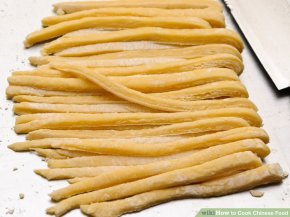 You can also get a gluten-free version if your dietary needs demand it.
You can also get a gluten-free version if your dietary needs demand it. - Rice vinegar is light in color and has a very mild taste. It is used to provide acid in Chinese cooking, but its acidic content is often lower than that found in American vinegars. Chinese black vinegar, on the other hand, is similar to balsamic vinegar and has a richer taste.
- Fish sauce and oyster sauce are made from seafood extracts and various seasonings. They can have a sweet yet savory flavor and are usually found in seafood and vegetable dishes.
- Chili sauce is a quick way to add more heat and flavor to a dish, but the amounts you use should vary depending on how spicy you want the final dish to taste.
- Hoisin sauce is another sauce with a sweet, smoky flavor. You will usually end up using this paste-like sauce in stir-fries or with spare ribs.
- Rice wine adds a bit more dimension to the flavor of sauces and marinades. It is more common to Japanese cooking than Chinese cooking, but there are a few Chinese recipes that call for a bit of rice wine. If you do not have any and cannot find it in your local grocery store, you should substitute it with a dry sherry.
- Keep dry seasonings, as well.
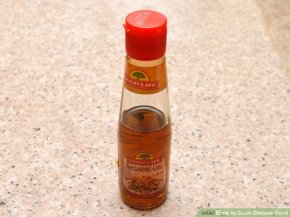 Dried herbs and spices are not quite as essential as many of the liquid seasonings you will end up using, but there are a few of these that you will use frequently in your dishes, so it can help to know about them in advance.
Dried herbs and spices are not quite as essential as many of the liquid seasonings you will end up using, but there are a few of these that you will use frequently in your dishes, so it can help to know about them in advance.
- Know which fruits and vegetables to include. While some of the produce you find in Chinese cuisine may seem familiar, others might be new territory for you. Use fresh fruits and vegetables whenever possible, and when it is not possible to do so, buy high-quality canned goods.
- Garlic and ginger should be kept on hand at all times. These ingredients are used for flavor in many different dishes. You can use dried versions, but fresh versions give a stronger aroma and taste.
- Mushrooms are fairly common ingredients, but look for types specifically labeled as "Chinese mushrooms." These tend to be fairly intense in flavor. Note, though, that you will usually need to buy them in dried form.
- Fresh vegetables worth checking out include bell peppers, chili peppers, cucumbers, water chestnuts, bamboo shoots, bean sprouts, snow peas, carrots, white onions, green onions, and eggplant. Fresh fruit you might need include tomatoes and pineapples.
- Use fitting sources of protein. Eggs are a common source of protein in Chinese dishes. Tofu is another popular choice. Note, however, that Chinese food can include a variety of meats, poultry, and seafood.
- Eggs are included in Chinese soups, stir-fries, and other dishes, so you should have some stocked.
- Chicken, duck, pork, and beef are among the most common forms of meat used, while shrimp and crab to be among the most common forms of seafood used.
 Part 2
Part 2
- Take out the wok. A wok is a specific type of bowl-shaped pan used for stovetop cooking. With its high sides and and sturdy base, it is suitable for most cooking techniques that involve hot oil or other hot liquids. The shape itself is designed to spread heat evenly.
- A traditional round-bottom wok works well if you have a gas stove. With these types, you can toss food around inside the pan more easily while containing most grease splatters.
- A flat-bottom wok works better if you have an electric stove since it can balance on the stove more effectively. These woks usually have long handles that enable you to shift food around in the pan by tilting it, but the heat is spread a little less evenly than in round wok.
- Practice using cooking chopsticks. Chopsticks are essential eating tools if you want to eat Chinese food in a traditional manner, but they also make excellent cooking utensils. Make sure that you actually use chopsticks made for cooking, though, since these are usually longer an may be joined at the end with a string to help hold them together.
- Use chopsticks when you need to turn and lift fried foods, mix stir-fried foods, or stir soups.
- If you do not have chopsticks, though, you could perform most of the same tasks with a standard set of tongs, mixing spoon, or spatula, depending on the task at hand.
- Use a cleaver. A Chinese cleaver is essentially a large knife you use for cutting vegetables and meat. It has a heavy, smooth blade and is very sharp, making it capable of cutting through even the woodiest of vegetables.
- When holding the cleaver, place your index finger over the top of the blade and your thumb and middle finger knuckle on either side of the blade.
- Form a "cat's paw" with your other hand to protect your fingertips as you hold the food you cut in place on the cutting board.
- Invest in a rice cooker. While a rice cooker is not absolutely essential, having one will definitely make your life easier if you plan on making Chinese food frequently. These appliances come in a range of sizes, so make sure that you choose one based on the number of people you will usually end up serving when you cook.
- If you do not have a rice cooker, though, you could make rice on the stove with a standard saucepan and lid. It can be more difficult to cook the rice evenly this way, but it is certainly doable.
- Learn how to use a steamer. If you plan on making a lot of steamed Chinese food, invest in a traditional bamboo steamer. These steamers come in stackable layers, so you can cook up to four or five dishes at once. Dishes that require more cooking are placed on the bottom layer, while those needing less are placed in a higher layer.
- You can use other types of steamers if you do not have a bamboo one, though. A standard metal steamer works well. In a pinch, you could also place a wire mesh strainer inside a stockpot with a little boiling water and a lid.

